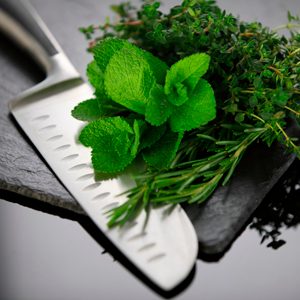
1. The Cutting Board’s Composition Matters
Wood, bamboo, and plastic are better for your knives than composite boards. Harder boards like glass, metal, stone and ceramic will quickly destroy knives.
If you get one as a present, hang it on the wall, but do not use for food preparation. Your knives will be thankful.
(Photo: iStockphoto/Thinkstock)
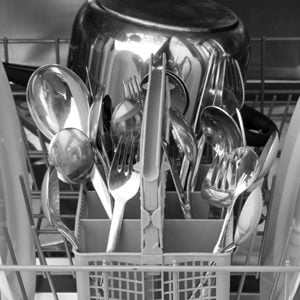
2. They Can Damage Your Dishwasher
Never clean your kitchen knives in the dishwasher. There are so many things that can get damaged, from the knife itself to the hand of someone reaching in unaware that a knife is in there.
Your dishwasher’s plastic lining can also be nicked by knives. Always wash knives carefully by hand.
(Photo: Hemera/Thinkstock)
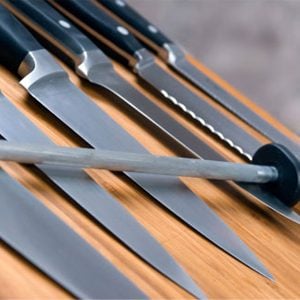
3. A Sharp Knife Leads to Fewer Cuts
The reason you cut yourself less with a sharp knife is because it takes less force to cut through anything.
Sharp knives aren’t scary, blunt ones that need loads of force and are liable to go anywhere are. Use the right tool for the job and use it the right way.
(Photo: Hemera/Thinkstock)
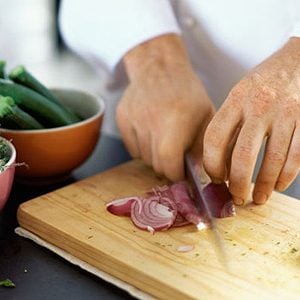
4. Proper Cutting Technique Can Save Your Fingers
Tuck your fingers under when chopping and use your knuckles as a guide for the knife.
Watch your thumb too! Keep it behind the fingers you’re using to hold the food you’re cutting.
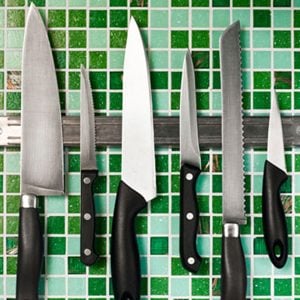
5. Choose the Best Knife for You
The best knife for your best friend may not be the best knife for you. If possible cut with a knife, or at least handle it, before you buy it to see how it feels in your hands.
(Photo: iStockphoto/Thinkstock)

6. Only use Your Knife for Cutting Food
(Photo: Jupiterimages/Comstock/Thinkstock)
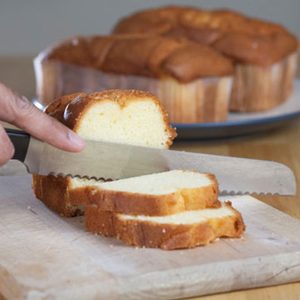
7. A Serrated Knife Isn’t a Saw
Most items can be cut in a nice slice with a single long draw of a sharpened serrated knife.
(Photo: iStockphoto/Thinkstock)
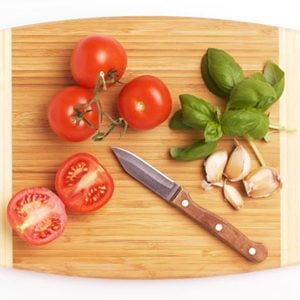
8. Keep Your Cutting Area Clear
Don’t place any item on your cutting board that you don’t want to be cut. Less clutter makes chopping easier, and less likely to go wrong.
(Photo: iStockphoto/Thinkstock)
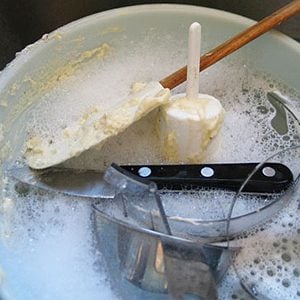
9. Keep Knives out of the Sink
Sharp knives + washing up bowls full of soapy water + unsuspecting hands = nasty surprise.
Wash your knives immediately after use, dry them, and put them away in a knife block, knife drawer insert, or secure magnetic rack.
(Photo: iStockPhoto/Thinkstock)
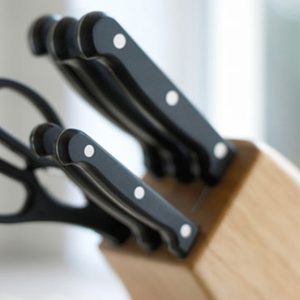
10. Skip the Huge Gift Sets
You are better off buying a couple of really good knives than a huge block set of mediocre knives.
(Photo: George Doyle/Stockbyte/Thinkstock)
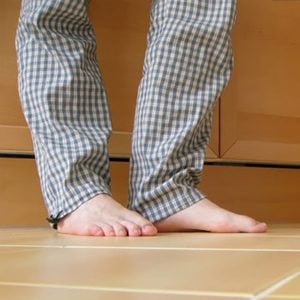
11. A Falling Knife Has No Handle
Don’t grab for it. Just let it go and watch your feet. Also, don’t cook barefoot.
(Photo: Hemera/Thinkstock )
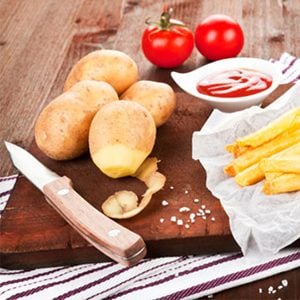
12. Secure Your Cutting Board
Brace your cutting board by placing a itchen towel beneath it on the counter. The stability can help protect your fingers during cutting.
(Photo: iStockphoto/Thinkstock)
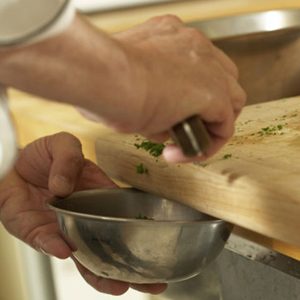
13. The Blade is for Cutting, not Corraling
Many people use the blade edge of a knife to corral the food to the edge of the board. Avoid using the blade of the knife to sweep things off the board, instead turn it over and use the spine of the knife to keep the working edge sharp. Just be careful with the upward turned blade.
Sources: Adam Marr/Marr Knives, Christopher Miller/ Owner/ Industri Cafe, Mark Richmond/owner/Chefknivestogo.com, Sebastians, Tom Bolton, Kenny Chan, Mike Zollner / Zollners.blogspot.com
(Photo: Jupiterimages/Photos.com/Thinkstock)